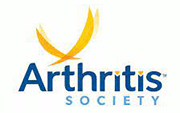The Arthritis Newsletter
Spring 2015The Ankylosing Spondylitis Quiz
By Gerry Sheanh
The author offers a lighthearted look at living with advanced Ankylosing Spondylitis.
Though it is a relatively obscure form of inflammatory arthritis, anklylosing spondylitis (AS) can result in serious pain due to the fusing of joints, as well as significant and permanent deformity due to the fusion. You may encounter someone with AS in a work environment. Some days they may present no evidence of the pain or fatigue that visits them for long periods of time, and other days they may struggle to get through the day. In order to understand what is going on with these people, here is a simple quiz designed to educate and inform.
On entering a room, most persons with AS:
a) offer praise for the interior decorating
b) deftly down three glasses of champagne
c) scan quickly for the least painful place to sit
C: The mere act of sitting in one place for too long can be painful for the AS patient, so finding a comfortable place to sit is imperative. Many otherwise pleasant gatherings have been ruined by ending up sitting on a straight-backed wooden chair or, worse, the hearth of a fireplace.
On entering a meeting room, most persons with AS:
a) sit on the table
b) sit under the table where it’s easier to hide
c) choose to sit at the end of the table
C: Persons with AS don’t think themselves more important or needy than anyone else, but sitting at the end of a long table allows them to see everyone without having to turn their whole bodies.
When walking over uneven ground, most persons with AS:
a) keep both eyes on the sun as it shines through the tops of the trees
b) keep both eyes on their handheld GPS so as not to become lost
c) keep a steady gaze on the ground in front of them
C: A simple stumble or minor trip can result in weeks of pain for AS patients, who are also at greater risk for fractures since the joints are fused and don’t move the way conventional joints are supposed to work.
When going up or down stairs, most persons with AS:
a) give in to the urge to slide the banister
b) try to take the steps two or three at a time
c) proceed cautiously while gripping the handrail
C: Again, any fall for an AS patient is potentially more serious than for those without AS, so special care must be taken when going up or down stairs.
When among crowds of moving people, most persons with AS:
a) link arms and sing simple songs of freedom
b) try to crowd surf above the throng
c) do everything possible to avoid being bumped or jostled
C: Some people with AS are sometimes thought of as anti-social because they tend to avoid large crowds, especially if those crowds are moving in one or several directions. Unexpected bumps or jostling can cause unwanted pain episodes.
On waking in the morning, most persons with AS:
a) spring from their beds to greet the day
b) hit the snooze button
c) know that the stiffness they feel will loosen as the morning unfolds
C: People with AS know they can’t spend too much time lying down or else the stiffness worsens. Light exercise and range of motion routines help keep a person limber. As with all arthritis, rest is rust, and rust is bad.
On going to bed at night, most persons with AS:
a) curl up on the floor with a small pillow and a teddy bear
b) sleep on the softest mattress possible
c) need ten minutes just to arrange multiple pillows to allow support while asleep
C: It is important to properly support the head and neck, along with the low back, between the knees and sometimes the chest. I use five pillows, each with it’s own particular supportive purpose.
When a well-meaning civilian tells the AS patient about her grandmother’s home remedy for all things arthritic, most persons with AS:
a) run right out and buy gin and raisins
b) skip the raisins, drink the gin
c) thank the person politely and continue with a policy of better living through pharmaceuticals
C: Everybody has a time-honoured remedy for arthritis, which may or may not include apple cider vinegar, gin-soaked raisins, ear candling, WD-40 sprayed on the offending joints, braces, splints, pickle juice, shark cartilage, glucosamine, celery seed tea, oregano oil and a myriad of other more obscure potions. Experience tells me to listen to my rheumatologist, and to take appropriate medications to limit inflammation, stiffness and joint fusion. I may still show up smelling of pickle juice and gin, but not without my medication.





















































